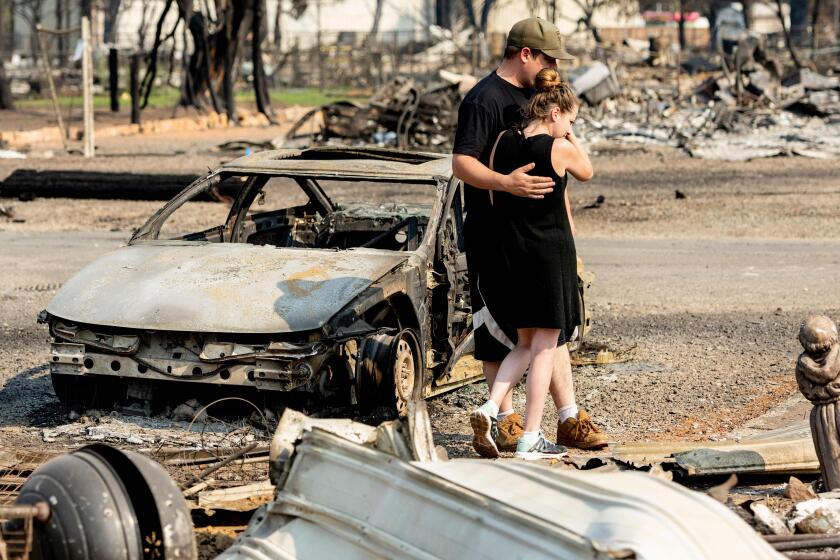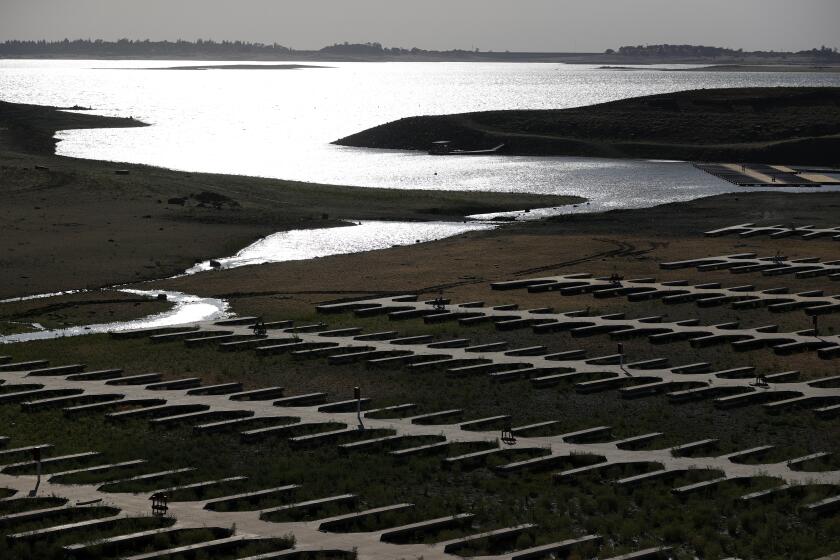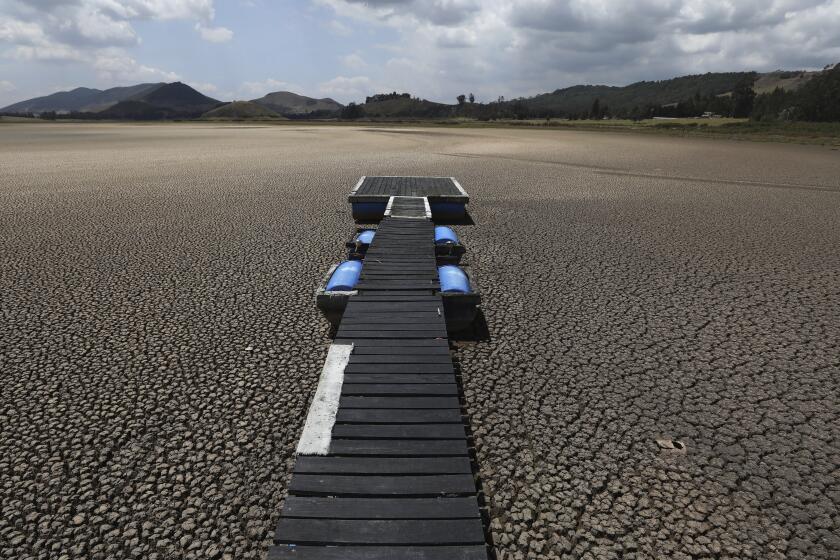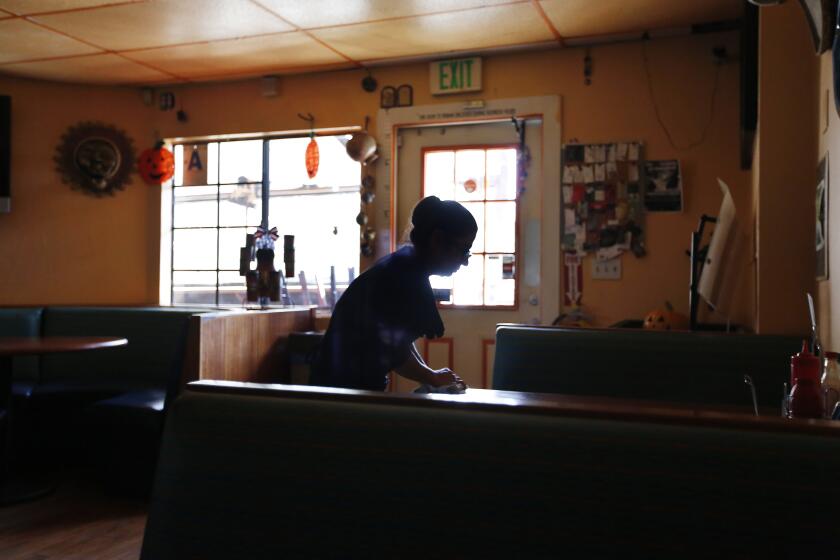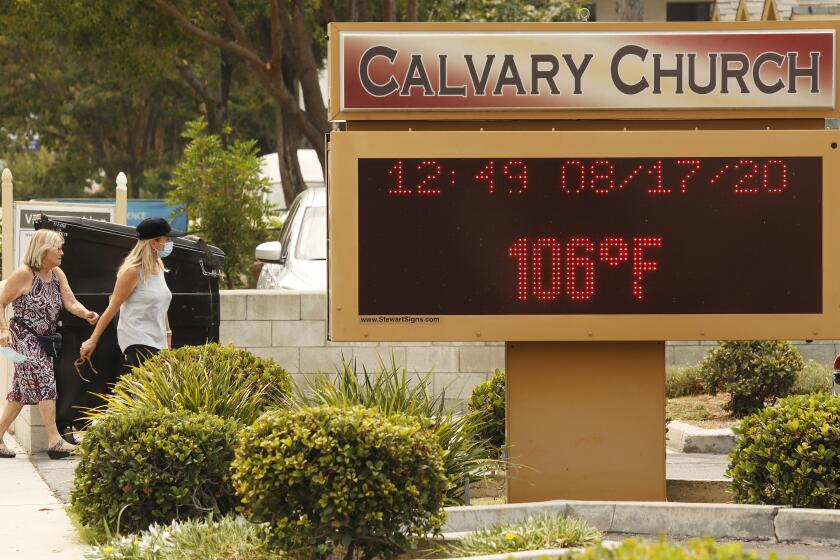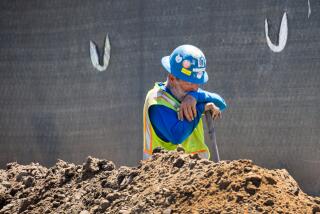Record heat approaches Dust Bowl levels: How it is changing life in California
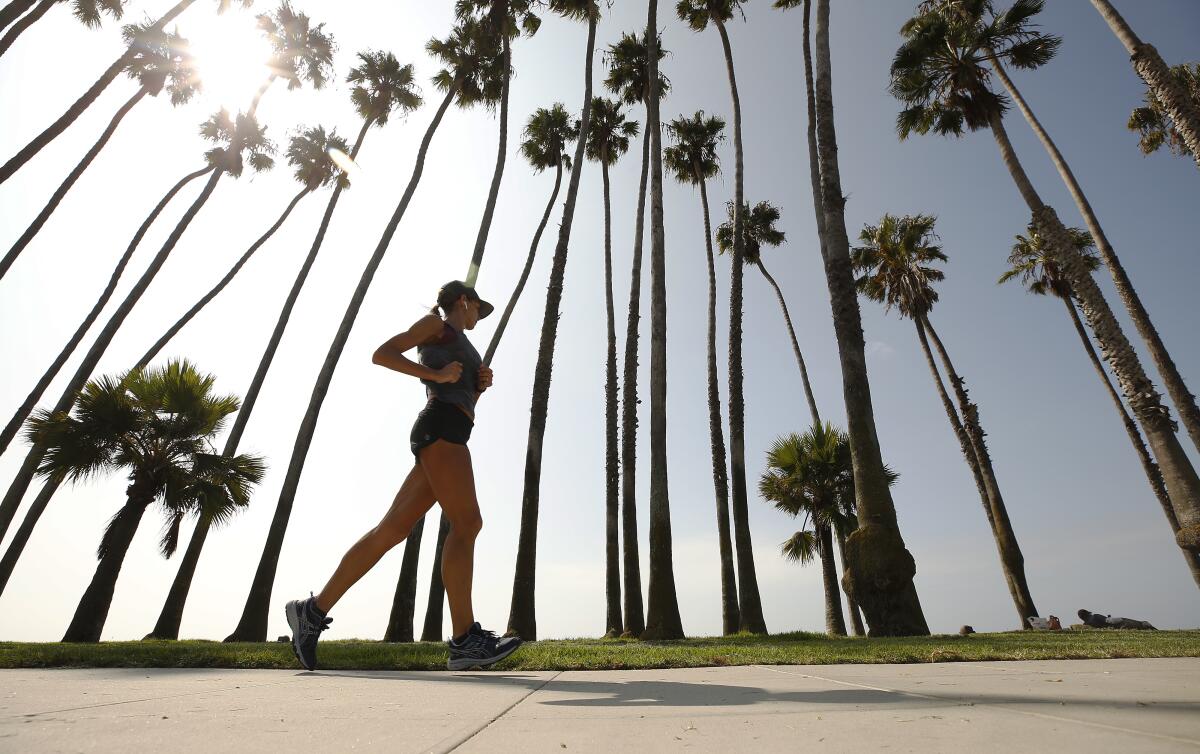
- Share via
California and several other Western states experienced their hottest summers on record this year.
Warming trends spurred by climate change are fundamentally altering life on the West Coast. Here is a breakdown of what the super-heated summer means:
Dust Bowl territory
Nationwide, the stretch from June to August tied with the 1936 Dust Bowl summer as the hottest on record, with temperatures across the country averaging 2.6 degrees above normal, according to the National Oceanic and Atmospheric Administration. A record 18.4% of the contiguous United States experienced record-warm temperatures.
The grim conditions of the Dust Bowl years were more of an outlier, said Karen McKinnon, an assistant professor at the UCLA Institute of the Environment and Sustainability, while the latest extremes belong to a larger warming trend. In fact, she said, the summer of 2021 was even hotter than mere extrapolation would suggest, leading some to question whether that warming is accelerating.
“We’re right smack in the middle of wildfire peak season,” Cal Fire Chief Thom Porter said. The outlook for the rest of the year includes more heat and dryness.
Wildfires
Rising heat and drought conditions have fueled huge fires this summer. Firefighters say the heat has made the terrain so dry that it is primed for ignition, spreading faster and hotter fires than they’ve ever seen. The Dixie and Caldor fires became the first to burn from one side of the Sierra to the other, and officials fear conditions will worsen in the coming months as the winds of fall arrive.
More than 2 million acres have already burned this year, and more than a dozen active wildfires are blazing across California. Added heat, dryness and the potential for dry lightning could make conflagrations worse or even ignite new ones.
“The warming of temperatures overall can lead to drying, and that drying later in the season can lead to warming, and all of those things can lead to enhanced wildfire,” McKinnon said. “Basically, it’s all linked.”
California resorts to unprecedented water cutoffs as drought worsens. How bad is it?
Drought
California water regulators took unprecedented action this summer, passing an emergency regulation that will bar thousands of Californians from diverting stream and river water as the drought worsens.
In Southern California, the Metropolitan Water District — which supplies water to some 19 million people across six counties — declared a water supply alert in August, calling on the region to conserve vital resources.
The move came one day after U.S. officials declared the first-ever water shortage on the Colorado River, which is a key source of water for the region.
While Gov. Gavin Newsom urged all Californians to voluntarily cut their water usage by 15% in July, it is likely that more restrictions will come soon.
A U.N.-appointed panel published a report summarizing the latest authoritative scientific information about global warming.
Heat impacts
Alan Barreca, an environmental economist at UCLA, said extreme heat is among the deadliest of natural disasters, and soaring temperatures often disproportionately affect the most vulnerable, including pregnant women and infants, elderly people, homeless people and residents of low-income neighborhoods.
Extreme heat also could be deadly for people without air conditioning during a heat wave, especially when residents are prompted to stay inside with doors and windows shut to avoid the hazardous effects of wildfire smoke.
A heat wave that blanketed the Pacific Northwest in June claimed the lives of hundreds, including immigrant farmworkers and the elderly.
An estimated 1 billion sea creatures died because of heat off the coast, and the Sacramento River is facing a “near-complete loss” of young Chinook salmon because of abnormally warm waters.
PG&E’s CEO has said wildfire-prevent blackouts could continue for another decade.
Power grid
Conditions have already become so dire that the California Independent System Operator, which runs most of the state’s power grid, on Tuesday asked the federal government to declare an “electric reliability emergency” that would allow six natural gas-fired power plants — including facilities in Huntington Beach and Long Beach — to generate power at maximum levels, even if they violate air pollution limits.
It‘s a scrambling effort by state officials to reduce the risk of rolling blackouts in the face of increased energy demands by adding new electricity supplies, including fossil-fuel resources that contribute to climate change and worsening heat waves — a short-term sacrifice that has proved controversial among clean energy groups.
The grid operator was granted a similar request during a heat wave last September, but only for a week. This time, the agency is asking for 60 days — a sign that it expects extreme heat could continue well into the fall. The ISO has already issued two flex alerts this week, which call on residents to conserve energy from 4 to 9 p.m., when net demand is typically at its peak.
Here are some ideas for reducing power usage and cooling down while California’s flex alert is in effect.
More information:
California faces a grim fall fire season
How close is Southern California to new water restrictions?
Unprecedented fire behavior in the Sierras
Rapid snow melt brings destructions in Shasta
Southern California’s inland ocean
Times staff writers Sammy Roth and Lila Seidman contributed to this report.
More to Read
Sign up for Essential California
The most important California stories and recommendations in your inbox every morning.
You may occasionally receive promotional content from the Los Angeles Times.
